How to Work a Full-Time Job While Traveling
How to work a full-time job while traveling
“I’m so sorry about the noise. And my internet constantly dropping on calls. And oh god, those three naked people chasing a watermelon into the pool.”
You do NOT want those words to come out of your mouth on a business call, trust me.
After working a full-time job while traveling for a few years, I’ve made some weird apologies. And believe me, the three shirtless drunk people that walked by your webcam cannot be explained in a way your employer will want to hear.
But let’s back up…
Let’s go back to the time before your boss saw those three naked people chasing that greased-up watermelon into a pool with chopsticks.
Let’s talk about all of the mistakes I’ve made in the past. Let’s talk about how not to have a chat about “The future of your employment with this company.”
Read my mistakes, feel my terror, and don’t duplicate them. You’re welcome.
Tip 1: Understand How Things Look
So you managed to convince your employer that you can effectively work while traveling. Congratulations, you have your first remote job!
Seriously, I’m writing this after work hours from a bar in Mexico basking in the awesomeness of being able to do remote work. Being a digital nomad is damn awesome.
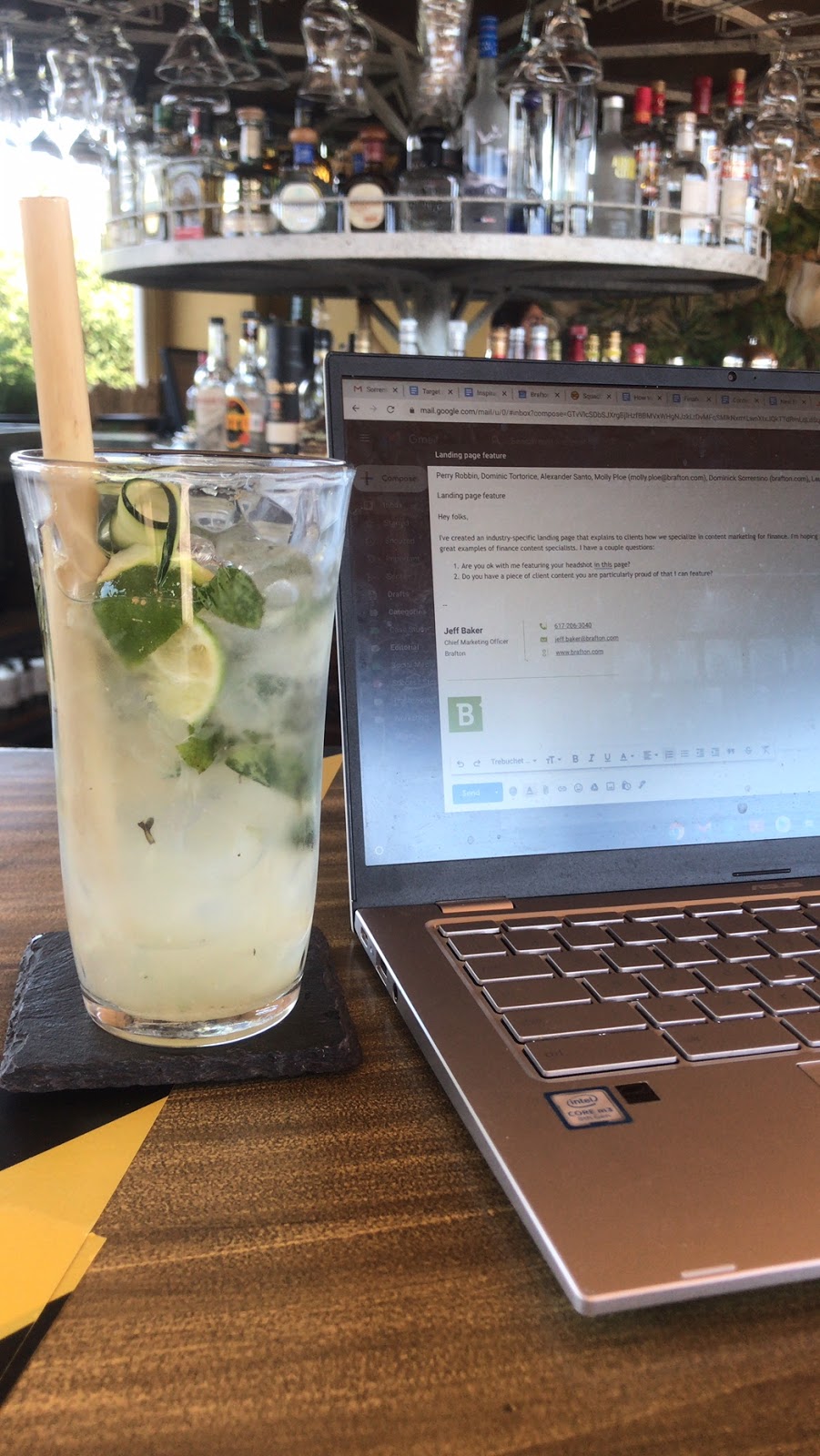
But here’s the thing: Most people don’t understand what you’re doing.
The problem: People don’t get it
And by “Don’t get it”, I mean they can’t mentally separate the concept of “traveling” from “vacation.” They assume if you’re traveling, you’re drunk on a beach. Or, at the very best, you’re not working hard. This makes work and travel mutually exclusive ideas.
And that’s doubly true if you’re in a beautiful location that they would have to save a year’s worth of vacation time and savings to get to.

The remote work lifestyle is so rare that most people just don’t understand how it works. Or that it even can work.
This creates a major problem: Your coworkers, and especially your boss(es), will be overly perceptive of anything that might indicate that you’re not as effective working while traveling.
Where an internet outage while working in your home office is completely disregarded, the same thing happening while working in Playa Del Carmen is (presumed) the likely result of you being irresponsible and de-prioritizing your day job.
Basically, you’re guilty until proven innocent.
As a trailblazer, you need to anticipate and overcompensate for these preconceived notions.
The solution: Nail the first few months
After you’ve convinced your employer that you should be allowed to work remote, the first few months are critical. This is your trial period, and you need to leave zero room for doubt.
Understand that you’re being judged and overcompensate.
Sure, it’s unfair and unjustified, but it’s reality. Simply understanding that most people still think working while traveling is reserved for an au pair, flight attendant, travel blogger, or cruise ship worker is a good way to empathize with how they view your lifestyle as a digital nomad.
Set a precedent that will leave no doubt.
People use precedents to forecast the future. It’s a mental shortcut that helps you make sense of the world.
For example, if I fired someone in the first meeting after being promoted, you would be thinking “This guy is a loose cannon, he might fire me at any time”, for months. That’s a precedent.
The same is true if my internet constantly drops calls the very first week I start working and traveling. The initial impression I made on my coworkers will build a shortcut in their brain that looks something like: “He can’t do this job effectively while traveling.”
That’s bad.
The first few months of being a digital nomad need to be stellar. You need to pretend you’re on a business trip with zero room for error. This helps ensure that any mishaps in the future are seen as normal, and random, and nothing to do with the naked watermelon chasers.
Tip: Take special care with your social media. You don’t want to give off a professional look on business calls only to blow it all up with Instagram stories of you typing on your laptop from inside a pool.
Tip 2: WiFi Preparation and Tools
Everyone likes beaches, right? Especially beaches in the tropics. I sure do. The beach sunsets in Santa Teresa and Puerto Escondido are bar none, the best I’ve ever seen.

What I didn’t know was that these beach towns would have rolling blackouts.
When we got hit with a random blackout, there was zero warning, leaving me with no wifi, no cell signal (because the cell towers get blacked out as well), and no way to tell my employer that I would be offline.
For all intents and purposes, I was dead to the outside world.
And when the internet did work, I had to pray that it was stable enough to not drop mid-call.
That’s a good way to get fired.
The problem: Solid wifi is a roll of the dice
Unstable (or nonexistent) internet is the biggest problem you’re going to face while working and traveling, hands down.
And this is twice as true if you’re traveling in a developing nation.
This wouldn’t be an issue if you were on vacation, but this is your life now. And trust me, constantly jumping from coffee shop to coffee shop searching for strong wi-fi is going to burn you out very quickly, if you don’t get fired first.
Sustainability is key.
Solution 1: Research your destination
This might seem obvious, but you’ll need to look up the average internet speed of the city you’re going to be staying in. By finding the average download/upload speeds, you’ll get an idea of what a best and worst case scenario will look like when you try to start working.
I recommend using Nomadlist to get this data. But simply Googling [city + “average internet speed”] will likely give you an answer.
For example: Nomadlist says that La Paz, Bolivia has an average download speed of 4mbps.

In perfect contrast, Galway, Ireland, has the best average internet speeds in the world.

In the first scenario, I would have every backup plan on this list. In the second scenario, I wouldn’t stress because I could pretty much get solid internet anywhere in the city.
Oh, and if you’re wondering what a good/bad internet speed is, here’s a quick rule of thumb for what you can accomplish at different internet speeds:
Keep in mind that these are minimum speed requirements. And once you start adding additional users to the network, you’ll quickly drop below the minimum required.
So if your company requires you to take video calls, you’d better make damn sure the download/upload and stability are solid.
And lastly, here are a few tidbits from my traveling experience that I find to be true:
- The closer to the beach you get, the worse the wifi will usually be.
- Developing nations will usually have less reliable internet.
- Locations that are commonly traveled by digital nomads will often have coworking spaces with workable wifi speeds. Keep an eye out for Selina, a chain of coworking spaces that usually delivers solid wifi speeds.
- Smaller cities generally have worse internet than larger cities.
- Unless you have a virtual assistant to cover your butt, you will be dead to the world when your wifi goes down.
- You can learn a TON about the best work spaces from travel blogs.
Solution 2: Ask your host for a speed test.
This might also seem like a no-brainer, but it’s overlooked 99 times out of a 100.
Whether you’re going to be staying in an AirBnb, hotel, hostel, or on a friend’s couch, you absolutely have the right to ask them for download/upload speeds before you agree to go.
Here’s an example: I was just looking into an awesome place in Valle de Bravo, Mexico, to spend the next couple weeks. Because it’s a tiny town, I was worried that the internet wouldn’t be workable (I couldn’t even find average internet speeds online).
So I emailed the AirBnb host for a Speedtest before agreeing to book the place. The host got back to me in less than 24 hours:
And there you have it, with 31 mbps down, I’ve averted a potential crisis on Monday morning.
Solution 3: Get a MiFi device
A MiFi device, or mobile router, will be your safety net. I kid you not.
MiFi devices use cellular data to broadcast a WiFi signal that you can tether to your laptop. It’s like walking around with really fast internet in your pocket. And seriously, it fits in your pocket. Look how big this thing is:
Huawei MiFi
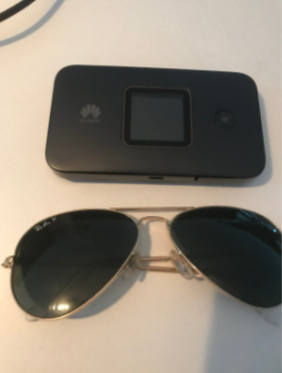
So how does it work when you’re in a pinch?
Imagine you’ve just arrived in a beautiful beach town in Central America. You’re absolutely stoked about the next month of working during the day in your AirBnB, sipping mojitos Sunday night, and looking forward to your commute to the beach tomorrow. Awesome.

Lucky for you, you have a MiFi device!
You power it on, connect, and are delighted with 20 Gbps download speeds, more than sufficient to host your call. And you’re saved.
So how do you go about buying and setting up a MiFi device?
There’s A LOT of options, but rather than getting into the nitty gritty details of MiFi devices, I’ll just cover the basics.
Generally there are two types of devices you can choose from: those with built-in data plans that you buy directly from the manufacturer, and unlocked devices that let you find your own data.
Built-in data plans: Some MiFi devices have built in subscription models, with “buy as you go” data plans, or rolling monthly limits. These tend to be a little more expensive, but can save you the hassle of recharging a SIM card.
Recommended subscription MiFi device: Skyroam Solis
Unlocked: Other MiFi devices are sold with simply the hardware, leaving it to you to work out your own data plan. Finding a data plan usually involves finding a local cell carrier and buying a sim card with preloaded data. This option is usually cheaper, but when you run out of data, you have to go to a store to recharge your sim card.
Recommended non-subscription MiFi device: Huawei E5885Ls
MiFi devices can get very complex, so I’ll leave it to you to do your own research. But just know that you should invest in the device, and carry a minimum of 10 gigs of data wherever you go.
Solution 4: Track down coworking spaces
If your destination has a nearby coworking space, all your internet problems will be solved. Seriously.
For those of you who have never been to a coworking space, let me explain…
A coworking space is basically a makeshift office. They usually come with an abundance of power outlets, desks or tables, conference rooms for calls, strong internet, coffee, and flexible plans. They’re set up for people just like you and me.

The Collective, Montreal

To give you an idea of what they’re like, here are a few I’ve been to recently:
An amazing side effect of the “digital nomad trend” is that coworking spaces are popping up all over the place, and not just in digital nomad hotspots.
So if you happen to be traveling somewhere that’s become a digital nomad hotspot, there’s a good chance you’ll find a coworking space.
While coworking spaces can vary wildly in comfort and quality, you can generally expect the following:
- Flexible plans, from daily drop-ins to monthly plans
- Prices that range from $2 USD per day to $12
- Meeting rooms for calls
- Strong internet
- Occasionally food.
In my experience, coworking spaces have all of the comforts and reliability of working from home, and oftentimes, more (because who wants to make your own coffee?).
Solution 5: Research cafes
Working from cafes is awesome. You have constant access to caffeine, food, and some background buzz that can help keep your concentration. The right cafe can be just as effective as finding a dedicated workspace. Check out the cafe I’ve been working at in Oaxaca:

But before you get running off assuming that cafes are the solution, keep in mind that some cafes are much more workable than others. As an office some cafes are amazing, and others are downright terrible.
Here’s a few things to keep in mind:
- Some cafes LOVE blasting music at nightclub decibels. This might be ok if you’re a freelance writer or graphic designer, but if you have to take calls, forget about it.
- Internet quality can range from amazing, to unworkable.
- You’re going to have to buy food and drink throughout the day to avoid getting dirty looks from employees.
Quick tip: Before heading to your destination, pull up google maps and look up cafe reviews. You’ll quickly learn about noise levels, internet quality, and equally of importance… coffee quality (I love my coffee).
Tip 3: Have a regular workspace (where you can do everything)
I can’t stress how important it is to have a regular work station where you can focus. I can’t tell you how often this aspect is overlooked by digital nomads, to their detriment. I’ve seen travelers trying to work from couches, bed, and even the toilet!
If you don’t feel good about where you work, you won’t feel good about the actual work you’re doing.
You should take this just as seriously as you would take your sleeping/personal space situation. You want your sleeping space to be your comfortable happy space, where you can recharge. The same should be said about your workspace (where you may even spend more time than your bedroom)!
You want to be able to count on having a workspace where the only thing you have to spend mental energy on is your work.
And it doesn’t matter where it is! Hell, it could be on the moon as long as it satisfies a few critical areas:
- Quiet: Just like your bedroom, you need to have a place you can go to where you aren’t distracted by people and noise.
- Power outlets: When you start working and traveling, you’ll quickly realize that power outlets are never as abundant as you expect (nor do the outlets always match your power cord).
- Stable internet: For reasons I already beat to death previously, you can’t have a “Work happy place” without decent internet.
- Access to food and drink: You’re going to lose your work rhythm if you have to constantly go on journeys for sustenance.
- Comfortable chairs: Trust me, the couch worker dude, and the bed worker gal are going to have back problems sooner rather than later.
- Clean workspace: I don’t care what anyone says, it’s harder to be productive in a dirty space than a clean one.
Quick Tip: Most often, I’m able to satisfy all of the above criteria in a well-researched AirBnb, or a quality coworking space.
Tip 4: Supplies and Productivity Tools
Do you know what happens when you get sand in a Macbook keyboard?
For those of you who have had this happen, I’m sorry for the lack of trigger warning. For those of you who haven’t, when you get sand in a Macbook keyword you’re probably going to be without the use of several keys until you find someone to repair your machine.
And if you’re in Costa Rica, that might mean two full days of bus travel to and from a computer repair shop. Not to mention, two days of not working, and a horrible conversation with your boss.
You can save yourself a TON of grief by investing in a few crucial items. Here are a few I find indispensable:
External battery charger
Having your phone go dead at your hometown Starbucks is one thing. A dead phone when trying to navigate your way home in a shady part of town in a country that doesn’t speak your language is a horrific experience.
What is it? External battery chargers are exactly what they sound like: a portable battery pack that you can charge your phone, headphones, MiFi device, etc. with.
I recommend getting one with a built-in wall plug, built-in iPhone and Android cords, and enough storage for at least a couple full phone charges. Here’s the one I’ve been using:
Tip 4: Supplies and Productivity Tools
Do you know what happens when you get sand in a Macbook keyboard?
For those of you who have had this happen, I’m sorry for the lack of trigger warning. For those of you who haven’t, when you get sand in a Macbook keyword you’re probably going to be without the use of several keys until you find someone to repair your machine.
And if you’re in Costa Rica, that might mean two full days of bus travel to and from a computer repair shop. Not to mention, two days of not working, and a horrible conversation with your boss.
You can save yourself a TON of grief by investing in a few crucial items. Here are a few I find indispensable:
External battery charger
Having your phone go dead at your hometown Starbucks is one thing. A dead phone when trying to navigate your way home in a shady part of town in a country that doesn’t speak your language is a horrific experience.
What is it? External battery chargers are exactly what they sound like: a portable battery pack that you can charge your phone, headphones, MiFi device, etc. with.
I recommend getting one with a built-in wall plug, built-in iPhone and Android cords, and enough storage for at least a couple full phone charges. Here’s the one I’ve been using:
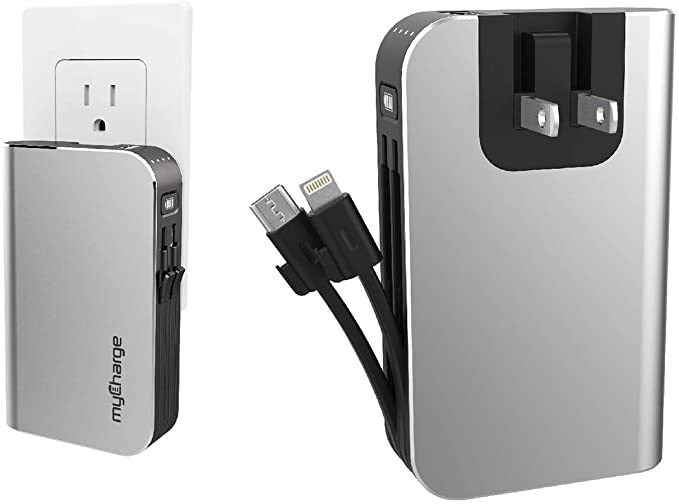
Second monitor
If you don’t normally use a second monitor, you have no idea what you’re missing. This is especially true for Tab Monsters, like myself. And fortunately, there are awesome portable monitors that clip right onto your laptop.

Laptop stand
I don’t particularly care for laptop stands, but my friends swear by them. They promote better posture and ergonomics. I have about a dozen friends that have this exact same laptop stand:
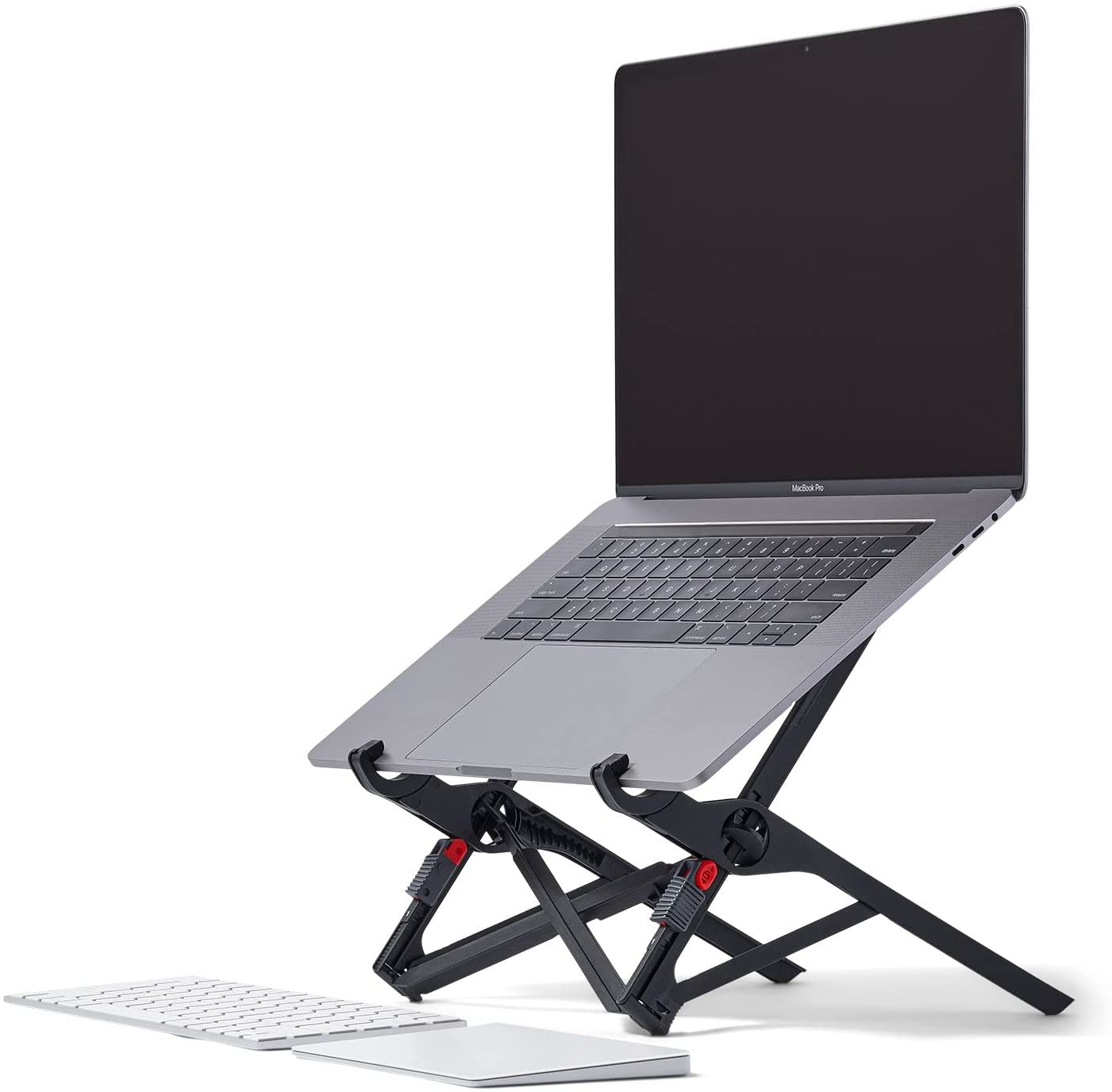
Laptop case and keyboard cover.
Remember that story about the rogue grains of sand destroying two days of productivity and sanity? There’s two ways you can get sand all up in your laptop: directly from sand getting on your keyboard, and from sand getting in your laptop bag/backpack. Get both a sleeve and keyboard cover.


Backup laptop and charger
This might seem ridiculous – I mean, who has the money for an extra laptop? I hear you. But I can’t even explain the terror in my friend’s eyes when we were on a beach in Santa Teresa and her laptop wouldn’t function. AND her company didn’t know she was traveling, nor did they want her to be. Fortunately, we had an extra tablet that got the job done, but what she really needed was an extra laptop.
I recommend either bringing your personal laptop as a backup. Or, if you use your personal laptop for work, ask your boss for a company laptop. If that fails, just invest in a cheap Chromebook that will get the job done until you’re able to fix the damage you caused to your primary machine.

You’re not going to solve pi on it, but it may be the best $279.99 insurance policy you ever buy.
Noise canceling headphones
Noise cancelling headphones have way more uses than you would imagine. For starters, when working in a public space (potentially with other digital nomads), it sends a clear signal that you’re busy and they’ll be much less likely to disturb you.
Second, you’ll occasionally find that you want some personal time to decompress and watch Netflix in your room. You’re not likely going to have access to great sound on whatever TV (if any) you have in your AirBnb. Noise canceling headphones are a cheap, portable solution for blasting Mad Max, Fury Road.
Lastly, they help get your focus on point. I’ve found the Bose QC 35ii bluetooth headphones to be the industry standard in this regard.

Headphones for calls
I absolutely cannot take calls with over-the-ear headphones. It feels like you’re underwater, talking like a Charley Brown teacher. Fortunately, I’ve gone through over a dozen different headphones before settling on the perfect set or phone calls. And it’s none other than Apple Airpods.
Whether you’re an apple person or not, you’ll find that the AirPods are absolutely ideal for sound, mic, and battery life on calls.

The AirPods also double as great earbuds for exercising because they don’t fall out, or smell like a damp foot after working out like every other device.
Runner up: Jaybird X3 headphones hold an amazing charge and provide solid sound. I’ve owned three pairs (because I keep sending them through the wash).

Travel Bag
I am a huge fan of carry-on luggage. When you’re traveling every few weeks, even months, you want your plane travel to be as convenient as possible.
I recently traveled to San Cristobal de las Casas with some folks who had carry-on luggage. There was a short layover in Mexico city, which meant everyone with a checked bag had to leave security, wait for their bags (which were late), then go back through security to wait for the next plane.
That sucks. And so does rolling around a fat suitcase. I would recommend investing in a travel backpack that comes with a day bag.
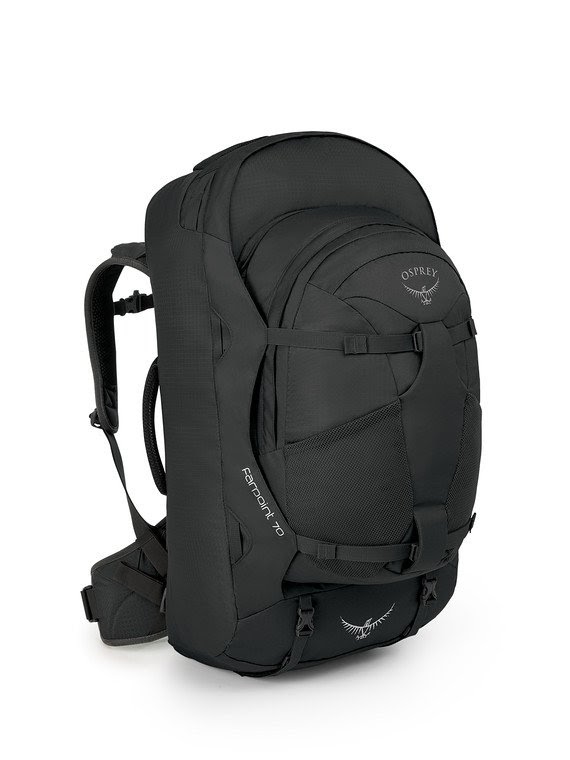
Water Filter
Out of all the things on this list, nothing has come in handy more often than a water filter bottle. I can promise you will be faced with a situation where you have to choose between severe dehydration and playing E. coli roulette with tap water. The tap water always wins, get a water filter.

If you choose not to buy any of these things and just wing it, that’s totally fine. But, I promise you’ll end up buying most of these things individually out of necessity (or panic) at some point during your travels.
Tip 5: Health and Routine
I can’t tell you how easy it is to create a habit of eating out at restaurants every night, skipping workouts, waking up too late, and drinking too much.
Traveling is exciting: you want to see everything, indulge in all the local food and drink, and meet new people. It’s damn hard to moderate, and a lack of moderation always comes at the expense of your physical and mental health, and work productivity.
Here’s a few tricks I use to live a sustainable lifestyle.
1. Exercise
While this is the likely the most predictable piece of advice, it’s usually the first bad habit to go.
And it’s not usually an issue of laziness!
Most people who can’t keep up with exercise when traveling usually just have a problem with convenience or lack of time to do the workout (they think) they need to do. Here’s a couple things I learned that keeps me in shape while traveling:
Small Daily Commitments
All-or-nothing thinking absolutely kills motivation. I’m talking about the person who thinks they need to go through a three hour routine in order to have a successful workout: pack a gym bag, drive 15 minutes to the gym, workout for an hour, drive 15 minutes home, then shower.
That’s half your day. And you’re certainly not going to be doing that consistently while you’re traveling. Hell most people can’t even keep up to that level of expectation with the convenience living in their hometown.
So rather than telling yourself that you need to absolutely kill yourself in a gym a few times a week, try committing to 20 minutes of exercise six days a week. It’s less daunting.
6 days of working out for 20 minutes is much better than 2 days of 60 minute workouts.
- You’ll build more momentum
- You’ll be more likely to commit to exercising every day
- You’ll be more likely to eat healthy on a daily basis so that you don’t ruin your workout.
Exercises you can do anywhere
If you’re an exclusive type of workout enthusiast, whether it be a gym rat, an avid runner, bicyclist, etc., you’re going to be seriously inconvenienced.
Some cities are terrible for running. Some cities don’t have adequate gym facilities. Some places will be 85 degrees fahrenheit by six am.
You’re going to need a workout you can do anywhere. I’d recommend any of the following types of home workouts:
HIIT Workouts
High Intensity Interval Training workouts are awesome for working and traveling because they check every box you could be looking for:
- Low time commitment.
- You can do them anywhere.
- They build strength and muscle.
- You’ll get plenty of cardio.
Until I discovered HIIT workouts, I struggled badly with keeping a workout routine while traveling.
Now, I wake up at 7am, do a 20 minute HIIT, take a cold shower, and the hardest part of my day is over before 8am.
EMOM Workouts
EMOM stands for “Every Minute On the Minute”, meaning a new exercise starts every minute. You have the full minute to complete the assigned number of reps. So, if you complete the assigned reps quickly, you get a short break before the next exercise.
Krav Maga
I’ve never tried Krav Maga, but people swear by it. They tell me it involves a lot of striking motions and cardio, but to me it just looks like a lot of creative ways to groin kick someone. You tell me.
Yoga
Yoga is probably the original at-home workout. All you need is one body length and width of floor space and you’re set.
With the amount of yoga diehards out there, I won’t insult you by suggesting a video – you probably already have your own.
2. Personal time and meditation
You need decompression time. I don’t care what your trick is to get to that place, you need to remember to do it, because when you’re hanging out with people 24 hours a day (and you likely will be), you’ll forget to recharge.
What works for me best is reading, listening to music alone, meditating, walking, and journaling. Whatever floats your boat, go for it.
3. Stock your fridge
If you don’t put things in your fridge, you’re going to get fatter than you started, I promise.
In my first trip to Colombia I bought zero groceries in six weeks, and I turned into a chungus. If you have easy access to the healthy foods you’re used to at home, you’ll keep to your diet.
I recommend biting the bullet and going on a major grocery run the first or second day you get into a new city. This will prevent you from going on a junk food binge.
Also, if you’re in any major city in Central or South America, you may have access to Rappi, which will deliver nearly anything you want to your front door. I’ve done two weeks worth of food shopping with just a couple keystrokes.
Conclusion
Everything on this list comes down to one simple concept: sustainable living. Your life is going to be insanely busy and highly uncertain (in the best way possible), therefore you’ll want to simplify as many areas of your life as possible. You want to put yourself in a situation where all of your essentials are reliable and easy to acquire:
- Internet
- Tech needed to do your job
- Quiet space (for personal and professional time)
- Exercise
- Healthy eating habits
The better you’re able to simplify these tasks, the more brainpower you’ll have available for enjoying life and being productive.
